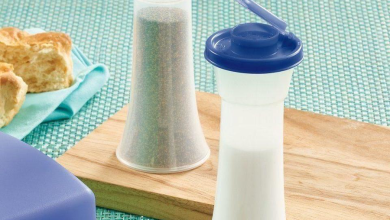
Carbonless copy paper is one of the most popular items in any office due to its versatility and convenience. However, these sheets of paper are often made with a large amount of carbon and are not recyclable in most places.
Carbonless copy paper can be recycled, but you’ll need to know the right ways to do it to maximize your impact on the environment and improve your company’s green credentials. You need to know about recycling carbonless copy paper at home or work.
What are Carbonless Copy Papers Made Of?
Carbonless copy paper contains two sets of carbon-based particles. The ink is sandwiched between two thin layers of high-quality, white (or another color) paper. The bottom sheet is coated with a layer of gum-based adhesive. Carbonless copies are typically used in business applications for invoices, receipts, and vouchers; most home printers don’t use them, although some specialty printers do so for specific documents.
You can recycle your used copies if you use carbonless copy papers to print invoices or other documents at home. It’s not always easy to find recycling centers that accept them—but it is possible. Here’s what you need to know about recycling carbons
Carbon Footprint
The whole reason for implementing carbon reduction measures is to preserve our environment and reduce pollution. Waste has a terrible impact on natural resources and human health, so choosing recycled products is necessary to limit how much trash you send to landfills.
Recycling one million plastic bottles can keep 1,000 tons of landfill waste from our oceans! Recycling also saves raw materials and energy, two other precious natural resources that we need more of to build a sustainable future.
So yes, carbonless paper can be recycled! Just make sure to recycle your used copies with your regular office waste. If you have questions about what goes where contact your local government or search online for recycling near me.
What is Thermal Printing Technology?
Thermal printing is a quick, efficient way to print large amounts of text and images. You might have seen thermal printers at restaurants, gas stations, car washes, and some convenience stores. The technology uses thermal wax transfer rather than ink, so you won’t have to change or refill cartridges regularly.
Though it is a greener alternative to laser printers, only 7 percent of people who purchased a new desktop printer in 2011 opted for a thermal unit (compared with 52 percent who chose ink-jet).
In 2013, 32 million personal computers shipped with thermal printing as an option. That number has grown every year since 2008. Today, 20 percent of all business documents are printed on thermal paper. By 2017, that figure will reach 25 percent.
However, unlike laser printers that can be recycled after they stop working, thermal units must be thrown away once they’re spent. Because there are no harmful chemicals involved in thermal large format printing, these units can be safely discarded with regular trash.
The key is not to mix them up with other electronics that could contaminate landfills and water supplies if they’re improperly disposed of—so keep your printer separate from your monitor!
What Does Recycling Mean for My Carbonless Copy Paper Usage and Me?
You may not know it, but you are likely using carbonless copy paper regularly. The name says it all – because it contains no trees or other sources of fiber, carbonless copy paper is completely made out of recycled materials. Many believe that recycling is an environmentally friendly practice. They can throw their unused sheets into any recycling bin without question.
This isn’t always true and may cause some confusion about getting your material where it needs to go. Many types of plain white office and printer paper can be safely tossed into one bin or another, depending on how old they are and what type they are; however, what sets Carbonless Copy Paper apart from others is its non-recycled content.
Since it is printed with perforations, which allow users to tear off individual sheets at a time, most people assume that these perforated edges make them too difficult for traditional recycling equipment to handle. While there is some truth to this statement, there are ways around these problems if you know where to look.
It’s important for anyone who regularly uses carbonless copy paper (or plans on doing so) to learn more about proper disposal options and their environmental impact over time.
Which Types of Places Accept Carbonless Copy Paper as Recyclables
Carbonless copy paper has one major flaw when it comes to recycling. Because of its makeup and construction, most places will not accept carbon copies for recycling. A few states, in particular, have no options at all for taking these forms of waste—these include Alaska, California, Washington D.C., Hawaii, Oregon, and Wisconsin.
However, there are still a number of places that do accept them for recycling; if you want to be 100% sure that your local spot accepts them and other types of cardboard materials (e.g., cartons), then check out Earth911’s Recycling Search Tool. You can type in your zip code or city name and see what is available near you. If they don’t take carbonless copy paper, they may take something else instead, like corrugated cardboard or newspapers.
How does carbonless copy paperwork?
Carbonless copy paper, or NCR paper, is a type of office paper developed in 1879. In its original incarnation, it was called carbon paper. Carbonless means that multiple copies can be made without re-coping over what’s already there (hence no carbon).
On each sheet of NCR is a thin layer of chemically treated white powder that soaks up ink from a ballpoint pen or typewriter ribbon when pressed on. If you hold an NCR sheet up to a light source and move it back and forth. You’ll see tiny white dots appear where someone has written with a ballpoint pen. Those dots are holes in the surface of the paper.
When they’re filled with ink, they become dark spots—the image transferred onto another piece of paper by your printer. So how does it work? Essentially, your printer lays down an electrostatic charge that attracts all those tiny particles until they’re stuck together like glue. The more charge applied, the more strongly those particles stick together–and thus, how dark your printout will be.






